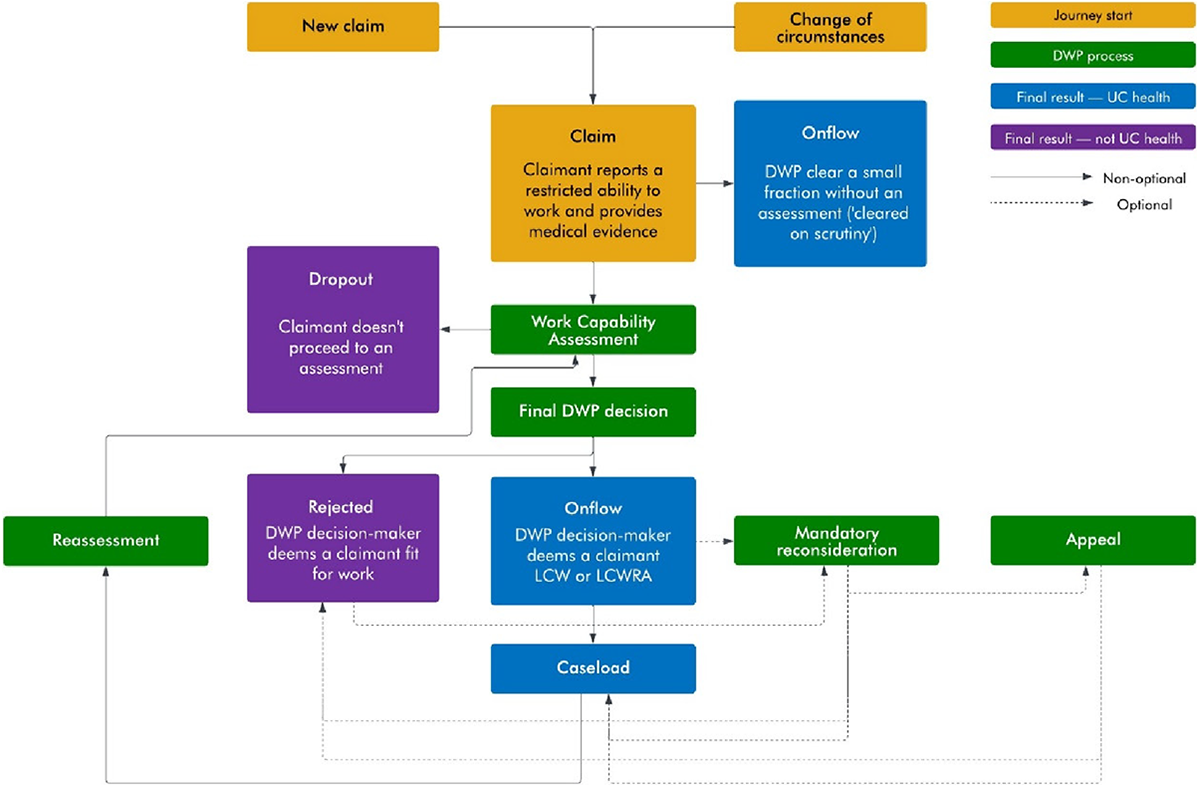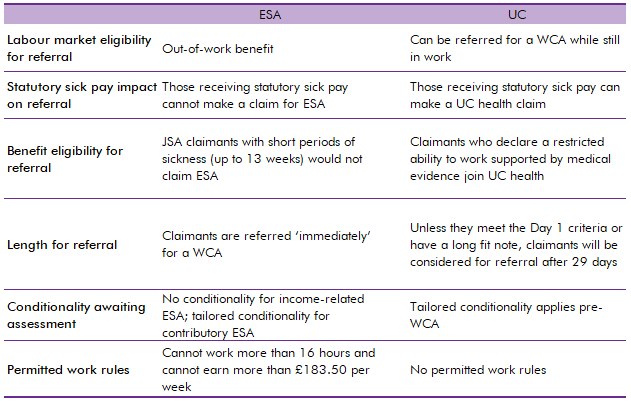There are several stages before a claimant joins an incapacity benefit. In this box we explained the stages involved in joining either the less-severe (LCW) or more-severe (LCWRA) groups under universal credit, and differences in the predecessor employment support and allowance benefit.
There are several stages before a claimant becomes an ‘onflow’ to an incapacity benefit, as detailed in Chart C below. To join either the more or less severe incapacity groups in universal credit, a claimant typically:a
- provides evidence of a restricted ability to work (typically a fit note provided by a member of staff in a claimant’s GP surgery) – an initial claim;
- if a fit note lasts longer than 29 days, DWP immediately refers a claimant for a work capability assessment. If a fit note lasts for less time that this, then DWP refers the claimant for a work capability assessment (WCA) after 29 days if a claimant does not drop out of the process;
- the claimant undertakes a WCA, after which the assessment provider issues a recommendation and DWP provides a final decision on eligibility.b We define a decision of more or less severe incapacity as an approval;
- if a claimant disagrees with DWP’s decision, they can ask for a mandatory reconsideration (which can also be appealed); and
- if a claimant then joins the less severe incapacity group (LCW), some may eventually be reassessed by an assessment provider to see if they remain unable to work for health reasons. Following policy changes at the 2023 Autumn Statement, if a claimant joins the more severe incapacity group (LCWRA), most will not be reassessed.
Chart C: Claimant journey for the universal credit health element

The claimant journey up to the point of onflow in UC differs in some important respects to that in ESA – summarised in Table A. We explore the role these changes may have had in trends in initial claims, dropout rates and assessment outcomes in this chapter.
Table A: Differences between employment and support allowance and universal credit health element claimant journeys

This box was originally published in Welfare trends report – October 2024
